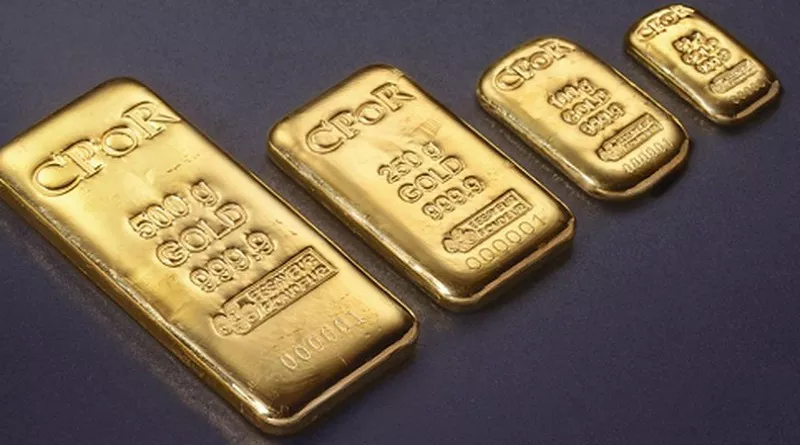The global economy is a complex web of interconnected factors, and as such, predicting its fluctuations can be a challenging endeavor. Economic downturns, such as recessions, often raise questions about the performance of various investment assets. Among these assets, precious metals, particularly gold and silver, have historically held a unique position as safe havens in times of economic uncertainty. Investors often turn to these metals as a means of preserving wealth when traditional financial markets become volatile. In this article, we will explore the historical trends and underlying factors that influence the performance of gold and silver during recessions.
The Allure of Precious Metals
Before delving into the relationship between gold, silver, and recessions, it’s essential to understand why these metals are so highly regarded as investment assets. Gold and silver have been valued for centuries due to their inherent characteristics:
Store of Value: Gold and silver have proven to be reliable stores of value throughout history. Their limited supply and resistance to corrosion make them appealing options for preserving wealth.
Hedging Against Inflation: Precious metals are known to be effective hedges against inflation. When fiat currencies lose value, gold and silver often retain their purchasing power.
Diversification: Including gold and silver in a diversified investment portfolio can help mitigate risk. These metals tend to move independently of other assets like stocks and bonds.
Geopolitical Uncertainty: During times of political instability or conflict, precious metals gain popularity as safe-haven assets.
Industrial Uses: Silver, in particular, has numerous industrial applications, which can create demand even during economic downturns.
Historical Trends
To determine the historical relationship between gold, silver, and recessions, we can examine past economic crises:
The Great Depression (1929-1939): During this severe economic downturn, gold and silver experienced notable price appreciation. Gold was pegged to the U.S. dollar at $20.67 per ounce until 1933 when President Franklin D. Roosevelt took the United States off the gold standard. After this, the price of gold began to rise, and by 1934, it was set at $35 per ounce. Silver, while not directly affected by the gold standard, also witnessed an increase in price during the Great Depression.
Global Financial Crisis (2007-2009): The global financial crisis, characterized by the collapse of Lehman Brothers and a subsequent worldwide recession, led to a surge in gold and silver prices. Investors sought refuge in these metals as the stock market plunged, and the U.S. dollar faced uncertainty.
COVID-19 Pandemic (2020): The economic fallout from the COVID-19 pandemic again highlighted the appeal of precious metals as safe havens. Gold reached record highs in 2020, surpassing $2,000 per ounce, while silver also saw a significant price increase.
It is evident that in times of economic turmoil, investors have historically turned to gold and silver as safe havens. The reasons behind this trend can be traced to the unique properties of these metals and their historical roles as stores of value.
Factors Influencing Precious Metals in Recessions
Several factors contribute to the rise of gold and silver prices during recessions. Understanding these factors can help investors make informed decisions during turbulent economic times.
Safe-Haven Demand: During recessions, investors tend to seek refuge in assets that are perceived as safe. Gold and silver have established themselves as safe havens due to their historical performance during crises.
Currency Devaluation: Recessions can lead to central banks implementing measures like quantitative easing, which can devalue fiat currencies. In response, investors often turn to precious metals to protect their wealth.
Uncertainty and Fear: Economic downturns create uncertainty and fear in financial markets. Investors, fearing further losses in traditional assets, move towards precious metals as a more stable alternative.
Supply and Demand Dynamics: While gold supply is relatively consistent, silver has industrial applications. As the economy recovers, the demand for silver in industries like electronics and solar panels may increase, potentially driving up its price.
Geopolitical Events: Recessions can be accompanied by geopolitical tensions. Precious metals often thrive during such periods as they are seen as a safe store of value in uncertain times.
Interest Rates: Low or negative interest rates can make holding precious metals more appealing. The opportunity cost of holding non-interest-bearing assets like gold and silver is reduced when interest rates are low.
Challenges and Considerations
While the historical trend suggests that gold and silver tend to appreciate during recessions, it’s important to acknowledge the challenges and considerations associated with investing in precious metals:
Market Volatility: Precious metals can also experience significant price volatility, which may not always align with the broader economic situation. Investors must be prepared for short-term price fluctuations.
Storage and Costs: Physical gold and silver require secure storage and may incur additional costs. Investors should consider these factors when deciding to hold physical metals.
Liquidity: Buying and selling physical gold and silver can be less liquid compared to other assets like stocks and bonds. Exchange-traded funds (ETFs) offer a more liquid way to invest in these metals.
Regulatory Changes: Government policies and regulations can impact the precious metals market. For example, restrictions on gold ownership were imposed during the Great Depression, affecting the market.
Conclusion
The relationship between gold, silver, and recessions is complex, but historical trends and underlying factors suggest that these precious metals tend to appreciate during economic downturns. Their intrinsic qualities as stores of value, hedges against inflation, and safe-haven assets make them appealing options for investors seeking to protect their wealth in times of uncertainty.
However, investing in gold and silver is not without challenges, including price volatility, storage costs, and liquidity concerns. It is essential for investors to carefully consider their financial goals and risk tolerance before adding these metals to their portfolios. Diversification remains a fundamental strategy for managing risk, and precious metals can be a valuable component of a well-balanced investment strategy during both economic expansions and recessions.


